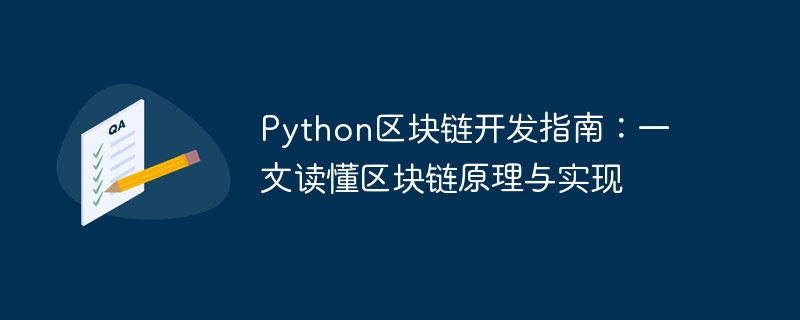
區塊鏈是一種分散式資料庫,它將資料儲存在多個節點上,而不是儲存在一個中央伺服器上。這使得區塊鏈具有很強的安全性,因為攻擊者無法透過攻擊一個節點來竊取資料。
區塊鏈中的資料以區塊的形式儲存。每個區塊包含一個哈希值、前一個區塊的哈希值、時間戳記和交易資料。哈希值是一個唯一標識符,它可以用來驗證區塊的完整性。
區塊鏈是一個不斷增長的鏈條,每個新區塊都添加到鏈的末尾。這使得區塊鏈具有很強的抗篡改性,因為一旦一個區塊被添加到鏈中,它就無法被修改。
使用Python實作區塊鏈相對簡單。我們可以使用Python的內建模組hashlib來計算雜湊值,使用datetime模組來取得時間戳,並使用JSON##模組來儲存交易資料。
import hashlib import datetime import json class Block: def __init__(self, index, timestamp, data, previous_hash): self.index = index self.timestamp = timestamp self.data = data self.previous_hash = previous_hash self.hash = self.calculate_hash() def calculate_hash(self): block_string = json.dumps(self.__dict__, sort_keys=True) return hashlib.sha256(block_string.encode()).hexdigest() def __repr__(self): return f"Block {self.index} ({self.hash})" class Blockchain: def __init__(self): self.chain = [] self.create_genesis_block() def create_genesis_block(self): genesis_block = Block(0, datetime.datetime.now(), [], "0") self.chain.append(genesis_block) def add_block(self, data): previous_block = self.chain[-1] new_block = Block(previous_block.index + 1, datetime.datetime.now(), data, previous_block.hash) self.chain.append(new_block) def is_valid(self): for i in range(1, len(self.chain)): current_block = self.chain[i] previous_block = self.chain[i - 1] if current_block.hash != current_block.calculate_hash(): return False if current_block.previous_hash != previous_block.hash: return False return True if __name__ == "__main__": blockchain = Blockchain() blockchain.add_block("Hello, world!") blockchain.add_block("This is a test.") print(blockchain.chain)
編程功能和豐富的庫支持,已經成為區塊鏈開發的理想選擇。本文介紹了區塊鏈的基本原理,並示範如何使用Python實現區塊鏈。希望本文能幫助您入門區塊鏈開發。
以上是Python區塊鏈開發指南:一文讀懂區塊鏈原理與實現的詳細內容。更多資訊請關注PHP中文網其他相關文章!




